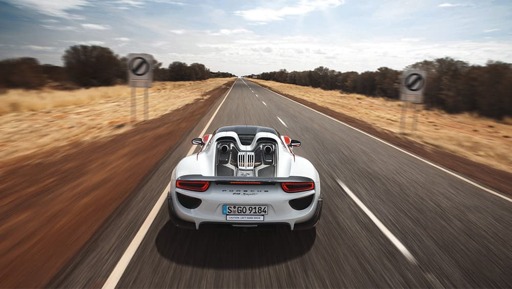Speed kills. It’s the message that we’ve had driven home for decades by law enforcement and the government. But it’s time to have a serious discussion about speed limits in Australia without the hysterics and put some cold, hard facts into the debate.
+20 regional / arterial, -20 suburban.
I could live with that tradeoff, but I’d have to see the regional speeds raised first because I don’t believe that would actually happen given how risk-averse our governments are. Instead regional roads keep getting their speed limits lowered and any suggestion of raising them raises cries of outrage - typically from people who aren’t even in the area and who get scared driving on roads without streetlights.
Agreed, but these 100k country back roads had those limits set with ;60s ford/holdens in mind. Which are unsafe as fuck compared to modern cars.
Indeed, so now both the roads and cars are a lot safer I would be very happy to increase speed limits - particularly on highways and country roads. The idea that speed is the root of all evil however has been pushed enough that an unfortunate amount of people believe it, as can be seen by how this post has been dogpiled with downvotes despite the article presenting a quite sensible view. I even got several downvotes elsewhere in the thead for pointing out that cars are actually safer now than in the 70s, as if that was somehow a contentious point of view.
Fuck cars!
We need more and better public transport.
States the statistics back this up, provides no statistics.
@Tau No. First, we need better drivers. Drivers who are taught Physics.
Cars need more things to be controlled by drivers, not less.
Every city should have a track where driving students can learn the consequences of losing control…safely…before they are licensed to drive on the road.
Then, and only then, can speed limits be increased.
Btw, older drivers need refresher courses. Drivers in their 30s, 40s, 50s, can be bloody nongs behind the wheel.People definitely need refreshers. Every time I go out I see at least one idiot on the road who would cause an accident if the drivers around them weren’t paying attention.
I absolutely agree, getting your Ls should involve a short course and test like it does for motorbikes. Just scanning the road and looking out for danger properly is a whole skill that people need to be taught.
I’d say the biggest thing we can really do for road safety is to just reduce car numbers, so of course more trains and a bunch of HSR between the cities. Going 130 can reduce your travel time by a tiny amount, but going 250-300 on one of the safest modes of travel is something else entirely.
I mean I won’t disagree with this, I am definitely of the opinion that people should be taught more driving skills.
I do doubt though that we’d end up with a useful course even if further training was mandated, so I am dubious as to the outcome of such a scheme. I say this as someone who’s been through a few licencing courses with a motorbike licence, MR licence, and forklift licence (and various other high risk or work related training courses). The truck licence didn’t really teach me anything new and was just a case of driving around making it look like you’re checking blind spots etc, the forklift licence practical was incredibly basic, and the theory part of stuff like the forklift and goods hoist license was basically served up to us on a silver platter rather than requiring learning. The motorbike courses at least tried to explain a bunch of basic concepts and handling but was stymied in practice by only being allowed to go 20km/h max in a carpark (after which feel free to head out out and do 90km/h on busy roads…).
@Tau I’m not sold yet. Bad licensing practices are no reason to say “Shove it. Let ‘so-called’ good drivers do faster speeds in supercharged cars, because we earned it.”
Most roads aren’t good enough for higher speed limits. Stick to XBox.
I’m not opposed to 130 km/h speed limits on the sorts of very remote highways where you’ll usually encounter like 20 vehicles max in an hour. But busy motorways where you measure vehicles per minute, like the Bruce Highway between Brisbane and the Sunshine Coast, or the motorways up and down the east coast between Brisbane and Sydney, despite being the most well-maintained, are just far too busy for such high speeds to be appropriate. It’s more appropriate on the roads that head out west with road trains.
But a much, much more sensible policy, if we’re looking at changing how we set our speed limits, would be to lower the speed limits within cities. Local streets and shopping high streets should be 30 km/h. Other roads should be adapted to be better for pedestrians and cyclists, including narrowing the amount of space given to cars if necessary, and a commensurate lowering of speed limits from 60 or 70 to 40 or 50. That’s still more than your average travel speed in a car is anyway thanks to traffic and lights. So you’d be adding safety and comfort for people outside of a car*, without actually negatively affecting those inside a car very much.
* and I do so hate how so many people talk about modern cars as being so much “safer” than old ones, while they completely ignore the increased danger they pose to cyclists and pedestrians—especially children. Modern cars are not safer.
Australia without the hysterics and put some cold, hard facts into the debate.
Sure here’s one this “journo” conveniently left out. Stopping distance is a function of speed and the relationship is essentially exponential. At 110km/h the stopping distance is approximately 113-143 meters. Hope you see that roo quick enough.

Like I told my last wife, I says, “Honey, I never drive faster than I can see. Besides that, it’s all in the reflexes.”
Not a bad rule of thumb that echos “drive to the condition”. Which I parrot to my partner/mates frequently.
Those reaction times are 1.5 seconds. How fucking drunk must you be? Reaction times are about 100ms if you’re paying attention.
In an emergency the average driver takes approximately 1.5 seconds to react
https://www.qld.gov.au/transport/safety/road-safety/driving-safely/stopping-distances
This average covers all ages, situations (fatigue) etc. I seriously doubt the average commuter can see, interpret and then apply brakes in 0.1s. Average reaction times for a video game is over 200ms lmao.
As a motoring enthusiast, I love to go fast, but there’s a number of problems:
-
a faster speed limit will not result in more cars per minute on a given road. As speeds increase, cars have to be more spread out.
-
by no means are Australian roads are in a condition for ultra high speed limits. Our way of fixing pot holes is very touch and go. We have bumbs and undulations. On the Autobahn, they replace the entire tarmac, not just fill in a hole.
-
a lot of our car fleet is not safe or designed to go 130kmh. A lot of older 4wds with big tyres, these were never designed to go fast. They have tiny brakes. In Germany a roadworthy is massive, and older cars are taken off the road.
-
a faster speed will result in more CO2 emissions. Cars (especially SUVs), get worse fuel mileage above 100kmh as wind drag becomes a greater burden. EVs get exponentially worse range at high speeds.
-
a lot of our car fleet tows caravans. That are not designed for that speeds.
-
in NSW were their L platers can’t go faster than 90, this will be a massive speed differential.
-
we have unique hazards such as wildlife and unlit highways that makes fast driving extremely dangerous.
-
faster driving leads to more lethal crashes, especially in poor weather.
-
This is standard motoring journo clickbait.
There is not a hope in hell that speed limits will be increased and the entire premise that ‘speed doesn’t kill’ is not supported by the science.
The claim that vehicles are newer and safer because they have new technologies is also pretty shaky:
- Blind spot warning became mandatory in 2023
- Lane assist became mandatory in 2024
- Adaptive cruise control is not mandatory
41% of vehicles registered in NSW are more than 11 years old
Year Number To 2005 1,242,766 2006 - 2010 1,208,845 2011 - 2015 1,628,588 2016 - 2021 1,812,007 Total 5,892,206 Source: Table 9 of the 2021 Motor Vehicle Census which is the most recent release
The claim that vehicles are newer and safer because they have new technologies is also pretty shaky
A significant proportion of cars do have the mentioned features though, blind spot monitoring is a nice easy one to notice and you’ll see a lot of cars do have it when you’re driving around.
Even without these specific features though modern cars are much safer than cars were when our speed limits were set. This even applies to cars now considered old - my own car for example now qualifies for historic rego and can drive quite safely at 130km/h (and is both less likely to get into a crash and much more survivable in the event of one than any 70s car).
Back when the 100km/h limit was set this was actually a fast speed for the cars and roads of the era. Now it is not - speed limits have become a recommended speed rather than anywhere near the limits of safety (assuming average car and normal conditions). Highway/freeway limits in particular are well due for an increase rather than the decreases (literally and effectively) they keep receiving.
Have human reflex’s been updated since the speed limits were set? The distance a car travels in the time it takes for you to see something like a pedestrian while driving, recognize it as a hazard, press the brake pedal, and then for the car itself to respond to your command and stop is one of the primary determinants of a safe speed.
About the only thing on that front that’s changed since the 70s have been improved breaks, but that’s been largely balanced out by heavier vehicles so stopping distance hasn’t been radically improved.
Higher speed still means longer stopping distances, longer distances between vehicles, wider minimum safe curves, shorter reaction times, more energetic collisions, and a larger gap between the speed limit and the maximum possible speed in rain, snow, and fog, which have remained nearly identical since the vehicles of the 50’s.
Vehicle on vehicle collisions have gotten more survivable when things do go wrong, but surely we should rejoice that people are more likely to survive a trip rather than increasing speeds until just as many die as they did before? I mean personally I would much rather live to see my destination than save a few minutes.
This also all just talking about highways, on all other streets and roads the six year old running out into the middle of the road has not gotten any more crashworthy than they were in the seventies, and slight reductions in speed have been proven to result in massive increases in pedestrian survivability.
About the only thing on that front that’s changed since the 70s have been improved breaks
Actually the biggest difference there is modern tyres. These are considerably better than those in the 70s - for an easy visualisation compare MotoGP lean angles and cornering speed from that era to what even consumer sport touring motorcycle tyres can handle these days (they weren’t cornering so comparatively slow for no reason, the tyres were the main limiting factor).
You also have modern suspension making a marked improvement on road handling, ABS making it so a chimpanzee can get the best braking without skidding, and in the last decade or so ESC has been making a notable difference to stability under braking and swerving. All together the average modern car will outbrake and outhandle an average 70s car by a long shot, particularly when not driven by an expert.
Actually the biggest difference there is modern tyres.
Agreed.
Except if you fit the noname retreads/tyres that happened to be on special when you needed tyres and have no money, and have manufacturing dates from some years ago.
Worse than driving on black ice.
I always look at the reviews and buy the best wet handling tyre I can afford. That’s when things get squirelly.
I’ve lived in Germany for 10 years and been 250ish on the autobahn.
Australian roads are no where near the quality, smoothness, curvature and undulation specs needed for 150+
I could see maybe some places the roads could be 130ish. But only for minute stretches.
But as for driving standards, no fucking way. Eg you cannot have people in the far right lane “I’m going the speed limit” so sit behind me.
Stay left unless overtaking for a good 5 years first, then can think about increasing speed limits.
PS this only works on separated direction freeways.
There’s an economic trade-off for everything. It’s not that we can’t have it happen, but roads like the Hume Highway and Pacific Highway will need to be completely redone with a widespread flattening of the road, gentler corners, constant surveillance of kangaroos and wombats on the road and a massive road maintenance workforce who can rapidly fix entire sections of the road.
This will require raising taxes or diverting funds, not worth it, especially when you have a road network that is at least 10 times the size of Germany, and with a quarter of the population.
Agree with the economic points.
Yes wombats etc would not be able to reach autobahns in most cases.
10 times the size of Germany
Germany is incredibly dense with roads and I’d say would have more paved highway KMs than Australia.
Thing is with the unpaved stuff in Aus you can often already do your 130+ cos nobody is around.
I’ve never complained about being behind a car that’s doing the speed limit in the right lane. In fact, they’re ideal because your get there in the fastest possible time using the least possible fuel.
A car in the rightmost lane doing the speed limit – by definition – cannot be an obstruction.
What pisses me off is cars with overreading speedos that think they’re doing the speed limit. Everyone should check theirs. 100% of new cars are wrong.
I’d happily sit on 130 if that’s the posted speed. That’s about 4500RPM in top gear for me… which is probably not the best for economy.
What part of the “keep left unless overtaking” don’t you like? 😅
I’m always overtaking a line of cars doing 98 in a 100.
deleted by creator
deleted by creator
Absolutely. I spent the last 4 years commuting 2 1/2 - 3 hours every day on the freeway.
I count my lucky stars that I’m still alive.
If they lower city speed limits to 30 kmph they can have their 130 kmph freeways. The latter still wouldn’t be a good idea but I’ll take the trade.
+20 country / arterial, -20 suburban.
Faster speed limits mean higher insurance premiums.
No. We have higher insurance premiums because the insurers felt like charging higher premiums.
I believe Australian governments should seriously consider 130km/h freeway speed limits on sections they deem safe to do so. (emphasis added)
Idk, doesn’t seem as contentious to me as most of the comments here seemed to indicate.
It really shouldn’t be, but there has been a lot of money and effort expended over the years here to make people believe speed is the root of all evil. Combine that with the fediverse attracting a larger proportion of who are ideologically against any form of personal motorised transport and anything involving cars or bikes can become surprisingly contentious even before you bring speed into the mix.
Nobody is gonna do jack shit cos speed limits are almost entirely revenue raising.
There is a road that used to be 100km/h it was all dodgy huge potholes u had to dodge etc. The government spent 6months making the road lovely and smooth making the corners nicer etc. They almost immediately after finishing changed the speed limit to 80km/h. I’m not saying this was explicitly revenue raising but they did have a speed camera sitting 200m past where the speed used to say 100km/h on the day they changed it.
NSW had also changed the law so that mobile speed cameras no longer need to give u warning ur speed will be checked like static cameras.
They also have 3rd party people managing speed cameras who get paid a COMMISSION.
Our speed limits are a perfect example of out nanny state and corruption working hand in hand to undermine our liberty and take our hard earned money.
Amen. Biggest killer on long drives is fatigue, slower speed limits are adding hours to already long trips. We need to see increased speed limits to save lives. Not sure what the libertarian party are pushing now but this was a big previous issue I could get behind















